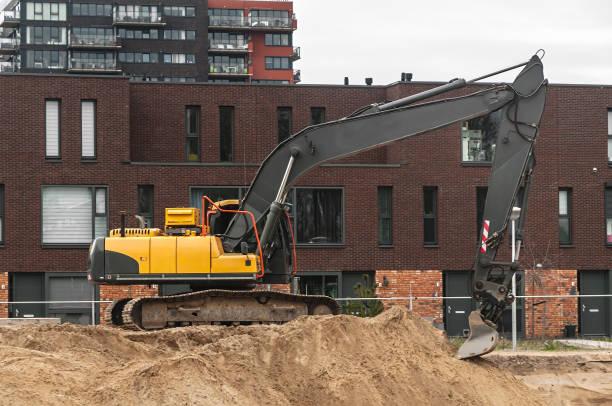Inspections of Used Volvo Equipment: What to Look for Before Purchasing

Buying used equipment is an excellent way to supplement your fleet. Buying used heavy equipment can save a lot of money, especially if you're on a tight budget or won't put the machine through a lot of wear and tear. However, you must ensure you get the best parts. It's never a guarantee, but here are some pointers for inspecting some of the more critical components on a used machine to ensure they're in good condition for the asking price. If you're new to buying used Volvo equipment or are simply curious about what you should look for on a used machine inspection, these are a few pointers to help ensure that the used equipment you're purchasing doesn't end up in the shop sooner than expected.
Previous Workplace Situations
Inquire about the machine's usage, where it's used, and the type of working environment it was in. Due to sand wear, undercarriages in sandy areas like Florida may last half as long as in more inland states. If a city or county uses a machine to manage salt for icy roads, it will be subjected to more corrosion, especially in coastal areas. Waste and demolition applications place additional strain on the tracks and tyres.
Tires
Many people overlook tyres, but this is a mistake that can harm your bottom line. Two things to look for are:
Tires Recapped: Tire recapping is pretty standard. Putting a new tread on a worn tyre is also known as retreading. Some companies do a good job recapping, and the tyres perform well, but only some do, and it's essential to understand that a recapped tyre is different from a new tyre. To identify a recap, look for a line that goes all the way around the tire's ring. It needs to be evident from a photograph.
Sidewall cuts: Determine whether they are severe or superficial. To determine the depth of the amount, use a tool such as a depth gauge. It depends on the width of the sidewall, but a cut of a quarter inch or more usually indicates a problem. This is more than just a performance issue. You may be fined and required to replace tyres with cuts in mining applications.
Seat
Check that all seat adjustments work so your operators can work comfortably and safely.
Components of Wear and Life Cycles
Before inspecting the Volvo machine, it is critical to identify the types of equipment you purchase. It would be best to look over a condition report to see where those components are in their life cycle. If you buy a broadly used wheel loader with 7,000 to 15,000 hours that have never had transmission work done, you are extending the life of that component. You'll almost certainly be purchasing a transmission while you own it.
ROPS (rollover protection structure)
Make sure to inspect all four corner posts for damage. Check for welds and that no one has drilled into them. It's common for people to mount CBs by digging into the ROPS, especially in mining applications. Suppose the ROPS is drilled, welded, or otherwise damaged. In that case, its structural integrity is compromised, which means that in the event of a rollover, the ROPS may fail, potentially causing injury or worse.
Samples of Oil
Examine an oil sample for metal contamination. An oil analysis will detect microscopic amounts of wear metals such as iron, copper, lead, tin, aluminum, and others. If you see high iron or copper content in transmission, there's a good chance of internal failure somewhere.
Hoses
Hydraulic hoses can be costly, so it's critical to inspect the fitting on the hose to ensure it's not corrupted. While it is impossible to predict whether a hose will blow internally, you can visually inspect the outside to ensure there are no areas where it will rub. Take the time to check for any potential leaks as well.
Undercarriage
The sprocket teeth on an excavator are worn out if they are incredibly sharp. If you notice worn sprockets, there's a good chance the bushings on the links are as well, which you can tell if they feel flat — bushings should be round. Finally, if you notice wear on the end of a bushing, it indicates that the bottom rollers are worn and rubbing on the bushing.
Buckets and Knives
Look for signs of wear and cracks. You can also pick up the bucket, turn it over, and inspect the bucket floor for dents, cracks, and wear. Check if the bucket's teeth have been worn down to a U shape.
Final Thoughts
The life of components on a used machine will vary depending on its use, so asking about its previous use and requesting a service history will provide a good starting point before beginning your inspection. Apply these guidelines to inspect your next used equipment purchase like a pro.
- Industry
- Art
- Causes
- Crafts
- Dance
- Drinks
- Film
- Fitness
- Food
- Παιχνίδια
- Gardening
- Health
- Κεντρική Σελίδα
- Literature
- Music
- Networking
- άλλο
- Party
- Religion
- Shopping
- Sports
- Theater
- Wellness
- News


